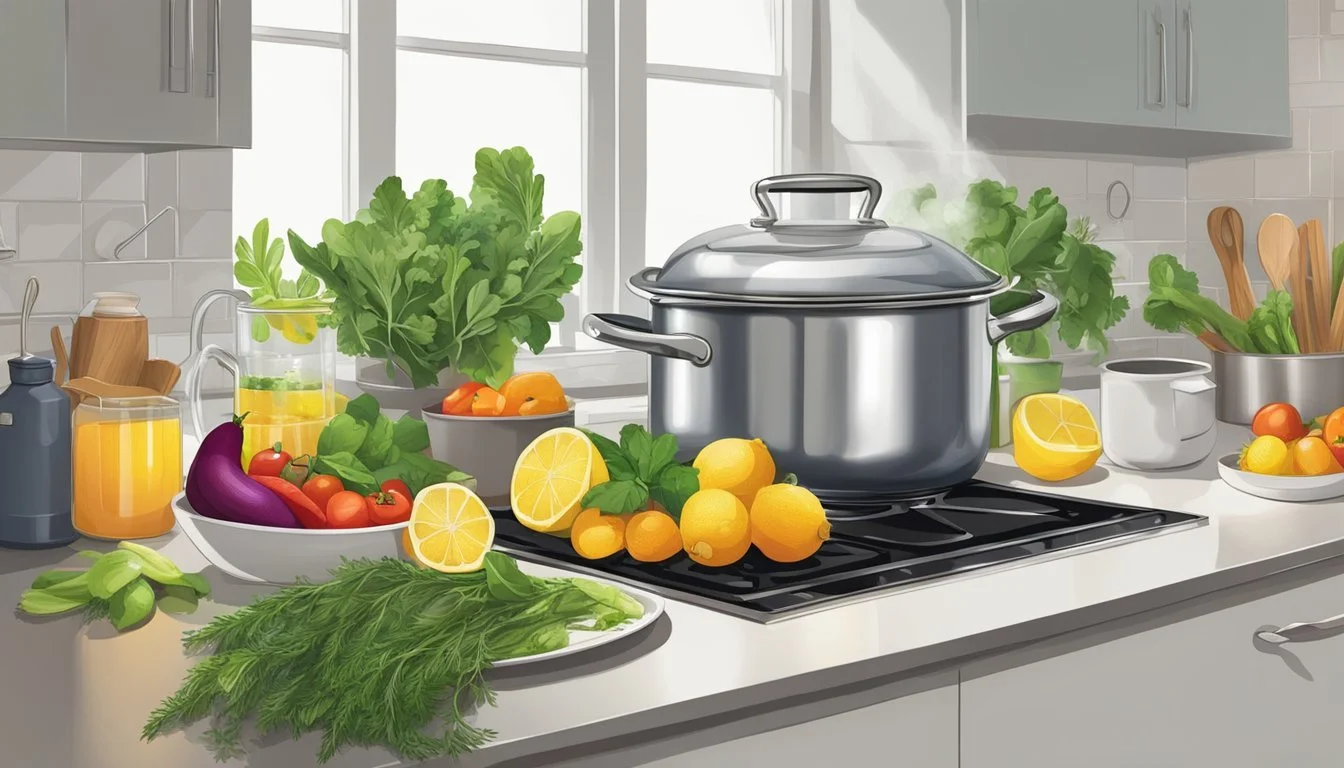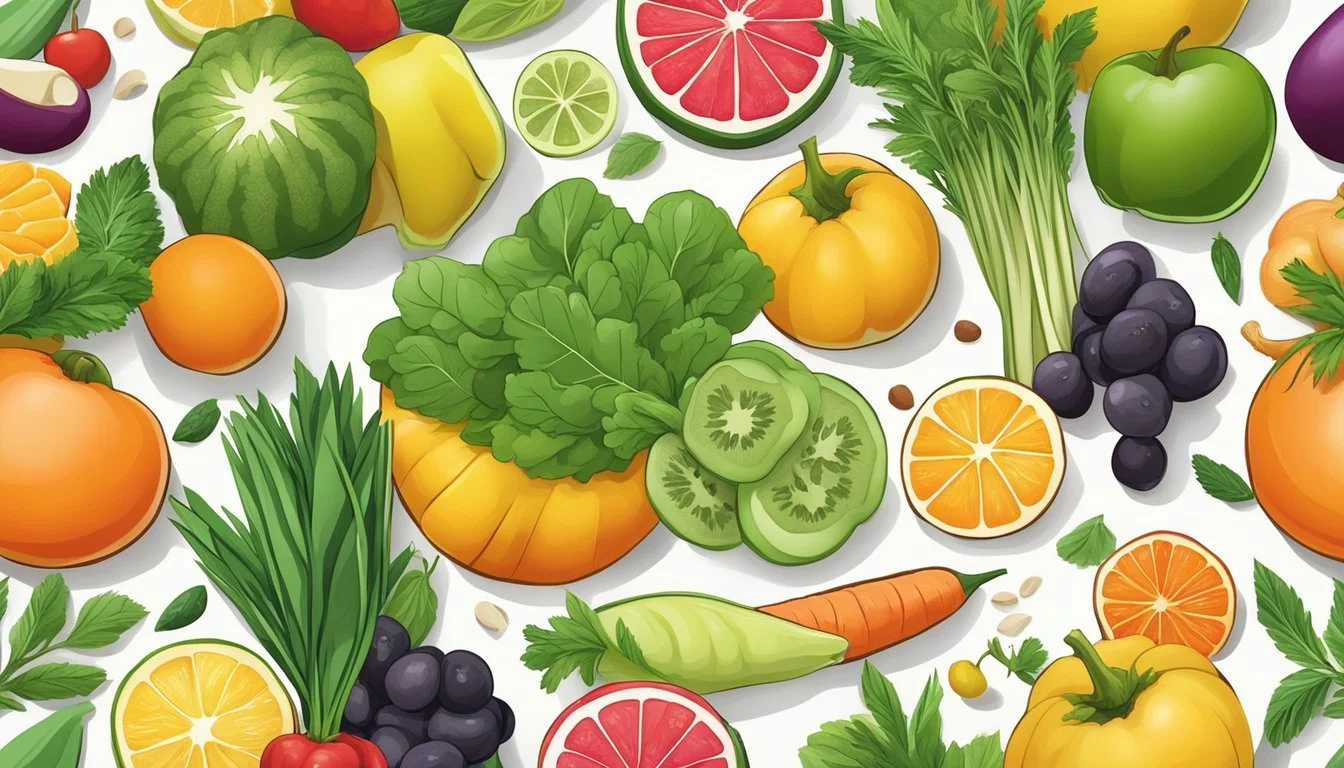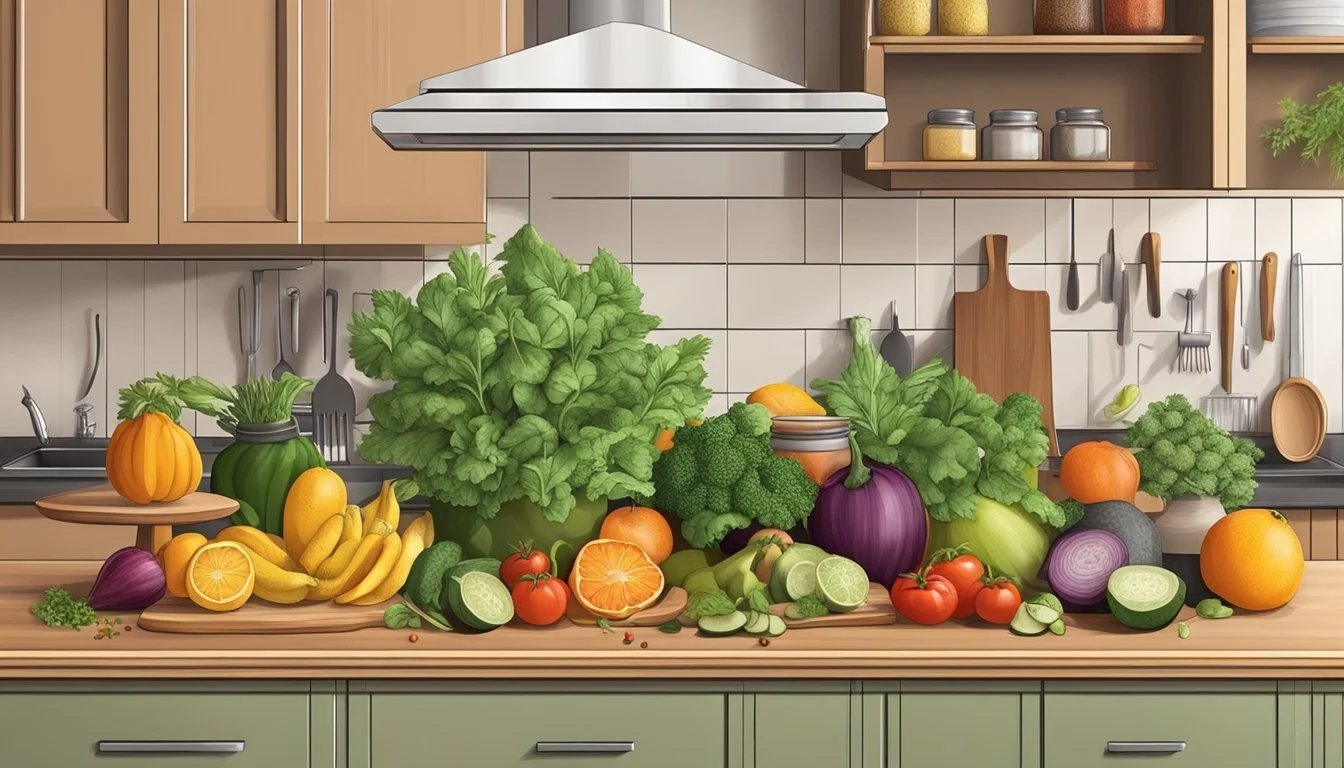How to Cook When You're on a Detox Cleanse
Simple and Nourishing Recipes
Engaging in a detox cleanse typically implies a commitment to purifying the body by eliminating toxins and consuming foods that aid in internal cleansing. The core idea is to support health and wellness through dietary choices that are conducive to the body's natural detoxification processes. Cooking during a detox can present unique challenges, as it often requires a departure from habitual eating patterns and the inclusion of specific health-supporting ingredients.
Preparing meals during a cleanse involves a careful selection of foods that contribute to the detoxification effort without introducing additional toxins or stress to the body. Common elements in a detox diet include a variety of fruits and vegetables, lean proteins, and ample hydration to support the liver and kidneys, the body’s primary detoxifying organs. These ingredients are often prepared in simple, nutrient-dense meals designed to nourish while minimizing exposure to processed substances.
Health-conscious individuals partake in cleanses not just for the potential short-term benefits, such as increased energy and digestion improvements but also as an opportunity to establish healthier long-term eating habits. It is crucial to recognize that while detoxing may aid in weight management, it is not the primary goal. The emphasis remains on overall health and the body's ability to rejuvenate and restore itself through the food choices made during the cleanse.
Understanding Detoxification
Detoxification is the body's intrinsic process of neutralizing or eliminating toxins. Toxins are substances that can potentially harm body tissue, including waste products that result from normal cell activity, such as ammonia, lactic acid, and homocysteine, and man-made toxins that we are exposed to in our environment, food, and water.
The liver plays a central role in detoxification; it filters the blood to remove large toxins, synthesizes and secretes bile full of cholesterol and other fat-soluble toxins, and enzymatically disassembles unwanted chemicals. This complex process is divided into three phases: functionalization, conjugation, and excretion.
Functionalization: During this initial phase, enzymes, primarily in the liver, transform the toxic molecules into less harmful compounds. These are often more water-soluble to aid in excretion, but occasionally they can become more reactive and toxic.
Conjugation: This second phase attaches small chemicals to the toxins, which increases their water solubility and reduces their potential for causing harm.
Excretion: Finally, the now harmless toxins are excreted from the body via urine, feces, breath, or sweat.
When individuals talk about a detox cleanse, they often refer to enhancing these natural processes through diet and lifestyle choices. A detox diet might include increased water intake, consumption of a balanced diet rich in fruits and vegetables, and the ingestion of prebiotics which support the microbiome. Additionally, practices such as exercise can accelerate the removal of toxins through increased circulation and perspiration.
Benefits of a Detox Cleanse
When engaging in a detox cleanse, individuals often experience a range of health benefits. These benefits can include improved absorption of nutrients, enhanced liver function, and a potential boost in metabolism leading to weight loss.
Improved Nutrient Absorption
Following a detox cleanse, the digestive system may become more effective at absorbing essential nutrients. Elimination of toxins and reduction in inflammation can result in a more efficient gastrointestinal tract. With a cleaner system, nutrients from fruits, vegetables, and other healthful foods stand a better chance of being fully utilized by the body.
Enhanced Liver Function
The liver is a key organ in the body's natural detoxification process, responsible for filtering harmful substances. A detox cleanse supports the liver by reducing its workload. It introduces antioxidants and nutrients that aid in the repair and rejuvenation of liver cells. This bolstered liver function contributes to the overall health maintenance of the individual.
Weight Loss and Metabolism Boost
Detox cleanses can lead to weight loss as the body rids itself of waste and retains fewer water and toxins. They may also revitalize the body's metabolism by eliminating processed foods and sugars, thus prompting it to burn fat more effectively. While not a sustainable long-term weight management solution, a cleanse may provide a temporary metabolism boost.
Key Components of a Detox Diet
A detox diet often emphasizes the elimination of toxins and nourishes the body with the essential nutrients it needs for optimal function. It typically focuses on foods and beverages that are high in antioxidants, fiber, and water content, as well as healthy proteins and fats that support the body's natural detoxification processes.
Importance of Water and Hydration
Detox diets place a significant emphasis on water consumption. The body requires water to help flush out toxins and keep the organs functioning properly. Adequate hydration ensures that the kidneys, liver, and digestive system can effectively eliminate waste products. It's recommended to drink at least 8-10 glasses of water daily.
Recommended daily intake: 8-10 glasses
Key minerals for hydration: Sodium, Potassium, Magnesium
Incorporating High-Fiber Foods
High-fiber foods are critical for any detox diet. Fiber aids in the removal of waste and helps regulate the body's use of sugars, keeping hunger and blood sugar in check. Individuals should include a variety of fiber-rich foods such as:
Vegetables: Broccoli, carrots, beets
Fruits: Apples, berries, pears
Legumes: Lentils, beans, peas
Whole grains: Oats, brown rice, quinoa
Focusing on Antioxidant-Rich Foods
Antioxidants act as the body’s defense agents. They are compounds that can prevent or slow damage to cells caused by free radicals. Foods high in antioxidants include:
Vitamins E and C: Citrus fruits, almonds, sunflower seeds
Beta-carotene: Carrots, spinach, sweet potatoes
Selenium: Brazil nuts, seafood, eggs
Lean Proteins and Healthy Fats
Proteins play a pivotal role in repairing and rebuilding the body's tissues, while healthy fats provide energy and aid in nutrient absorption. Select lean protein sources such as chicken breast, fish, or plant-based options like tofu. For fats, focusing on unsaturated fats is key:
Monounsaturated fats: Olive oil, avocados
Polyunsaturated fats: Walnuts, flaxseeds
Omega-3 fatty acids: Salmon, mackerel, chia seeds
Including these key components helps ensure the detox diet is balanced and beneficial, supporting the body's natural detox pathways and promoting overall health.
Foods to Include in Your Detox Plan
A detox plan focuses on incorporating nutrient-dense, whole foods that support the body's natural cleansing processes. Key components of such a diet include a variety of vegetables and fruits, whole grains, seeds, nuts, and legumes.
Variety of Vegetables
Vegetables are the cornerstone of any detox plan, offering vitamins, minerals, fiber, and antioxidants. One should prioritize leafy greens such as kale and spinach, which are high in vitamins A, C, and K. Cruciferous vegetables like broccoli — particularly broccoli sprouts — are excellent for their detoxifying properties due to their sulforaphane content.
Beneficial Fruits
Including a range of fruits in a detox cleanse is essential for their fiber, water content, and variety of nutrients. Fruits like pomegranates are not only rich in antioxidants but also promote liver health, a vital organ in detoxification.
Whole Grains and Seeds
Whole grains and seeds contribute to a feeling of fullness and support healthy digestion. Options such as brown rice, quinoa, and millet provide necessary energy during a cleanse without overwhelming the body. Seeds like chia and flaxseeds are also nutrient powerhouses, packed with omega-3 fatty acids and fiber.
Nuts and Legumes
Nuts like roasted almonds offer protein and healthy fats, important for maintaining muscle mass and overall health during a detox. Legumes such as beans are beneficial for their protein content and fiber, aiding in digestion and toxin elimination. They represent a wholesome choice for those looking to sustain their energy and satiety levels while cleansing.
Foods to Avoid During a Detox
When embarking on a detox cleanse, certain foods can hinder your body's natural detoxification process. The reader should focus on avoiding these to maximize the effectiveness of their cleanse.
Limiting Processed Foods and Sugars
Processed foods and sugars are a major no-go during a detox; they can counteract the body's efforts to cleanse itself. Processed items typically contain a high amount of additives and artificial ingredients, while sugars can cause spikes in blood glucose and can disrupt the balance of the gut microbiome.
Avoid:
Candies, pastries, and desserts
Processed snacks like chips and crackers
Sugary beverages including sodas and energy drinks
Avoiding Alcohol and Caffeine
Both alcohol and caffeine can place additional strain on the liver, an organ vital for detoxification. During a detox, their consumption can impede the liver's ability to process other toxins.
Omit:
Alcoholic beverages such as beer, wine, and spirits
Caffeinated drinks, including coffee, black tea, and some sodas
Reducing Dairy and Animal Proteins
Dairy products can be acidic to the body, potentially slowing down the detox process. Animal proteins, particularly those from red and processed meats, may also hamper detoxification by clogging up the bowels.
Minimize:
Milk, cheese, and other dairy products
Meat, especially processed meats like sausages and bacon
Detox-Friendly Recipes
When embarking on a detox cleanse, the focus is on ingredients that support the body's natural detoxification processes. These recipes are designed to be rich in nutrients, high in antioxidants, and beneficial for overall health.
Simple Detox Salad
A Simple Detox Salad usually involves a variety of fresh, raw vegetables that contribute to cleansing the body. A popular choice is the Kale Detox Salad, which might include:
Kale: Rich in fiber and sulfur, both great for detoxification
Carrots and Beets: High in vitamins and minerals, aiding liver function
Nuts and Seeds: Supply healthy fats and proteins
To prepare, one simply combines chopped kale, grated carrots, diced beets, and a sprinkle of nuts or seeds. Drizzle with a homemade dressing of lemon juice, extra virgin olive oil, salt, and pepper for enhanced flavor.
Nutrient-Packed Smoothies
Nutrient-Packed Smoothies serve as a powerful detox tool, supplying the body with essential vitamins and minerals. Easy to digest, they help the body to cleanse effectively. A detox smoothie may feature a blend of:
Green Vegetables: Spinach or kale for cleansing properties
Fruits: Apples, bananas, or berries for natural sweetness
Liquids: Water, coconut water, or almond milk as a base
Blend the ingredients until smooth. For added benefits, one can incorporate superfoods like chia seeds or spirulina.
Hearty Vegetable Soups
Hearty Vegetable Soups are soothing and filling, making them perfect for a detox dinner. They can include a variety of vegetables that support detoxification, such as:
Broccoli and Cauliflower: Help with liver health
Garlic and Onions: Contain sulfur compounds that are detoxifying
Leafy Greens: Provide magnesium and chlorophyll
One can simmer these ingredients in a homemade vegetable broth until tender. Season with herbs such as parsley or cilantro for flavor and additional detox benefits.
Supplementing Your Detox
During a detox cleanse, supplementation can enhance the body's natural detoxification processes. Specific herbal teas and juices offer beneficial nutrients, while dietary supplements should be used judiciously to support the cleanse.
Herbal Teas and Juices
Herbal teas can offer a range of benefits to individuals on a detox cleanse. Teas such as green tea, dandelion, and milk thistle are known to support liver function and aid detoxification. They can be easily integrated into the daily routine, providing a soothing and therapeutic effect.
Juices, especially when made at home, can be packed with vitamins and minerals. Key components of detox juices are:
Leafy greens (spinach, kale)
Root vegetables (beets, carrots)
Citrus fruits (lemons, oranges)
Apples and Ginger
Fresh juices can act as a nutrient-dense snack or supplement to meals, keeping hydration levels high and supporting overall health.
Using Dietary Supplements Wisely
Taking dietary supplements can complement a detox diet, but they should be approached with caution. It is important to research and potentially consult a healthcare provider before beginning any supplement regimen.
Essential supplements that may be considered include:
Milk thistle for liver support
Probiotics for gut health
Vitamin C and E for antioxidant support
Omega-3 fatty acids for anti-inflammatory effects
When selecting supplements, individuals should look for high-quality products with verified sourcing to ensure purity and potency. A balanced diet, however, remains the cornerstone of any detox program, and supplements should not replace whole foods.
Lifestyle Considerations
When embarking on a detox cleanse, one must not overlook the significance of an active routine and proper stress management. These lifestyle factors are instrumental in supporting the detox process, enhancing the efficacy of the cleanse.
Importance of Physical Activity
During a detox cleanse, engaging in light to moderate exercise is beneficial. Physical activity boosts circulation and supports the lymphatic system, which plays a pivotal role in detoxification. Individuals should consider exercises such as:
Walking: 30 minutes daily
Yoga: gentle sessions to enhance flexibility and relaxation
Cycling: low-intensity biking for 20-30 minutes
It's crucial to adjust the intensity of workouts to match one's energy levels during a detox cleanse.
Managing Stress and Sleep
The body's detox efforts can be hampered by high stress levels and inadequate sleep. Therefore, adhering to practices that promote relaxation and good sleep hygiene is important. Tips to manage stress and improve sleep include:
Meditation: daily practice can lower stress hormones
Consistent Sleep Schedule: aiming for 7-9 hours of sleep each night
Relaxation Techniques: such as deep breathing exercises before bed
Managing these aspects of daily life can make a detox cleanse more effective and improve overall well-being.
Common Mistakes and Misconceptions
When cooking during a detox cleanse, it is vital to navigate through the prevalent myths and understand the science underpinning detox diets. Misinterpretations can lead to ineffective and sometimes counterproductive practices.
Myths About Detoxing
Myth 1: Detoxing can compensate for an otherwise unhealthy lifestyle.
Fact: No detox diet can erase the effects of a consistently poor diet and sedentary lifestyle.
Myth 2: Detox diets can result in permanent weight loss.
Fact: Weight loss during a detox is often temporary, primarily from fluid and waste removal.
Understanding the Science of Detox Diets
Science 1: Detox diets aim to eliminate toxins and improve health.
Fact: The human body is naturally equipped with detoxification systems such as the liver, kidneys, and colon. Detox diets may support these systems but cannot replace their biological functions.
Science 2: Detox diets require specific foods and practices.
Fact: While various detox diets suggest certain foods, they should all encourage hydration and nutrients that support detoxification enzymes and processes.
Post-Detox Strategies
After a detox, it's crucial to gradually reintroduce a wide range of nutritious foods while continuing to prioritize the healthy habits developed during the cleanse. A thoughtful approach to post-cleansing allows the body to adjust to a more varied diet without overwhelming the digestive system.
Maintaining Healthy Habits
Drinking water is essential; it continues to support the body’s natural detoxification process even after the initial cleanse. Chewing food slowly improves digestion, allowing the body to absorb nutrients efficiently. It's advisable to integrate good probiotics through fermented foods or supplements, as they assist in maintaining a healthy gut flora.
Water Intake: Aim for at least 8 glasses a day
Mindful Eating: Take time to chew food thoroughly
Probiotics Source: Include yogurt, kefir, or a quality probiotic supplement
Transitioning Back to a Balanced Diet
A balanced diet should contain a mix of macronutrients (proteins, fats, and carbohydrates) and a diverse range of micronutrients (vitamins and minerals). Start by incorporating small portions of lean proteins and fiber-rich carbohydrates.
Lean Proteins: Chicken, fish, legumes
Fiber-Rich Carbohydrates: Oats, brown rice, quinoa
Gradually increase the portion size and variety over time. Introduce different types of healthy food groups one at a time to monitor how the body reacts to each addition. This methodical reintroduction helps maintain the benefits of the detox while moving towards a balanced diet.
Healthy Fats: Avocado, nuts, seeds, olive oil
Vegetables: Leafy greens, cruciferous vegetables, root vegetables
Fruits: Berries, citrus fruits, apples
By taking these measured steps, individuals can ensure a smooth transition from a detox cleanse to everyday eating practices that continue to support their overall well-being.










